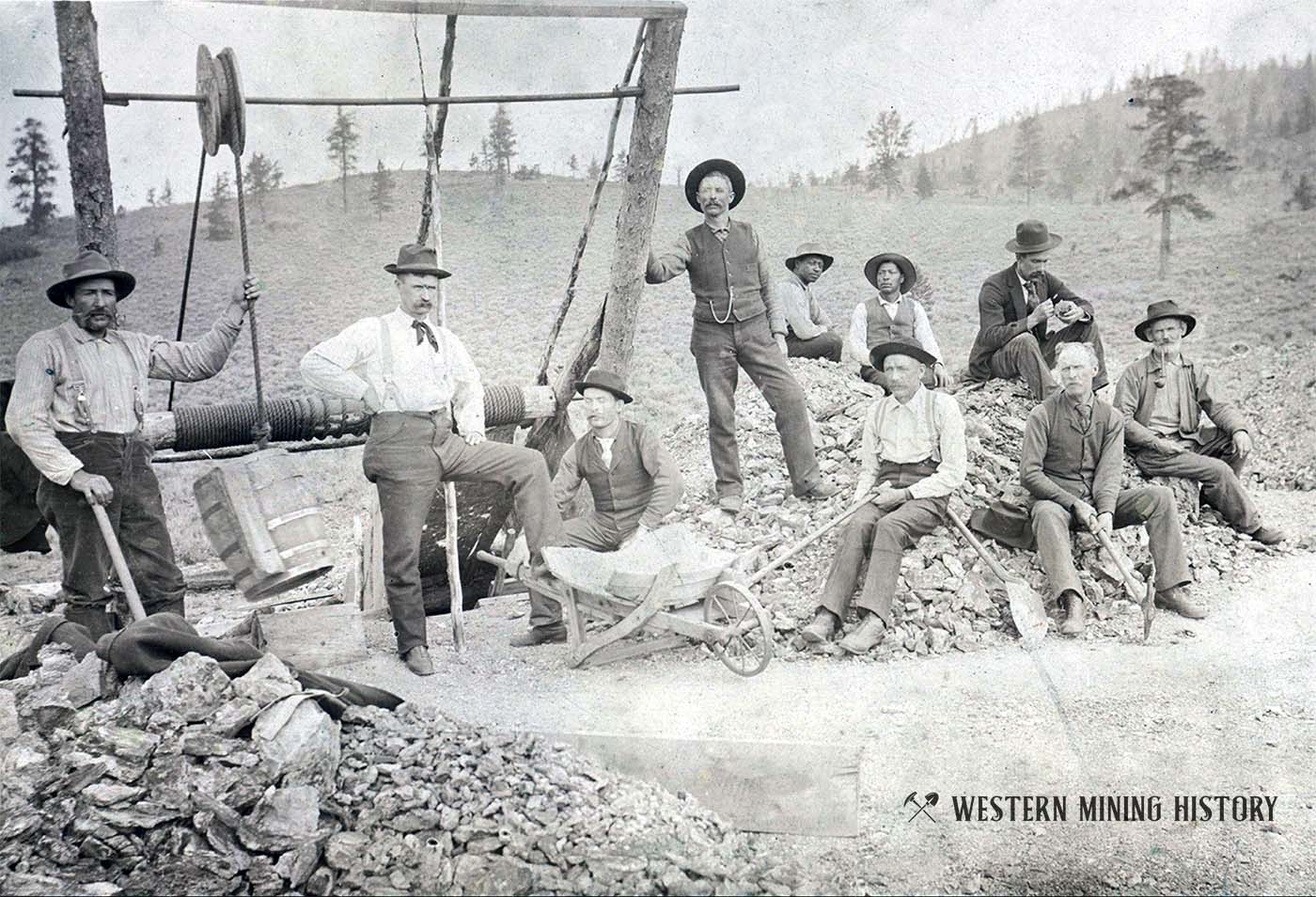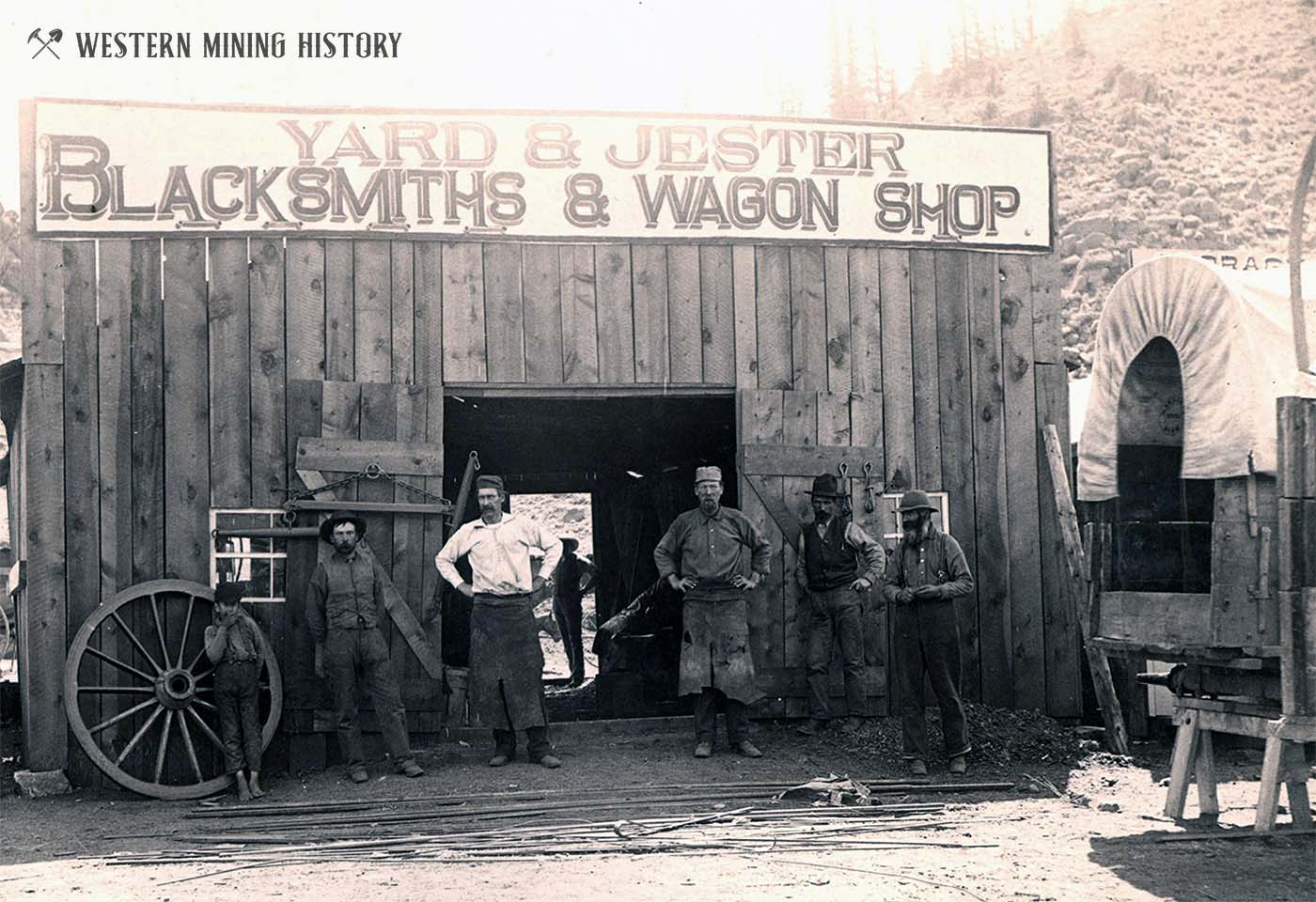Granite History
By Jan MacKell Collins
It can be easy to miss Granite, located along Highway 24 between Buena Vista and Leadville. But this small community beside the meandering Arkansas River is actually packed with history. For a time during the 1800’s, Granite was an important mining center during the Pikes Peak Gold Rush.
Situated between the Mosquito and Sawatch mountains, the tiny town once served as the county seat of both Lake and Chaffee counties, and was the scene of one of the most dreadful murders in Colorado history.
Granite lies amid the Colorado Mineral Belt, which consists of some 50 miles of pink, Precambrian granite. Galena, pyrite, gold, silver and copper have been forming here for thousands of years and were finally discovered by Anglo settlers during the mid-1850’s. Beginning in 1859, precious placer deposits were located at the headwaters of the Arkansas some 17 miles away.

Working their way along the river, prospectors soon found ample gold around today’s Granite in the amount of some 49,000 troy ounces. When the river and streams were depleted of their precious metals, prospectors began tracing veins and staking claims in the nearby valleys and canyons.

By 1860, the mining camp of Cache Creek had been established above today’s Granite, with some 300 miners. Within a year, between 1,500 and 3,000 people were living in the area.
While mining did not occur at Granite proper, the then-unnamed settlement would eventually become a main stopping point for the Barlow & Sanderson Stage Line beginning in 1865. From here, prospectors could easily access nearby mines as freight wagons delivered lumber and supplies. Those wishing to go on to Leadville simply hopped on the next stage out of town.

It was not until 1867 that Granite itself would grow as a community, after gold was found at nearby Low Pass Gulch. The following year, the site was finally named Granite. At the time, the town was in Lake County, and the county seat was moved over from the nearby community of Dayton. The courthouse was a two-story log structure, with offices upstairs and a jail on the first floor.

All was well until 1874, when a heated dispute began over land and water rights—both of which were becoming scarce. In one instance, the shooting death of one George Harrington near Salida resulted in the Lake County War, which lasted about a year. Rancher Elijah Gibbs and his ranch hand, Stewart McClish, were arrested for Harrington’s murder, but were acquitted.

The acquittal angered the other local ranchers, who formed a vigilante committee and attempted to serve some frontier justice on Gibbs by setting fire to his house. Gibbs escaped, killing two vigilantes and fleeing to Denver. Left behind was probate judge Elias Dyer, the son of Colorado’s itinerant preacher, Father John Dyer. Judge Dyer believed Gibbs was innocent, which thrust him into much public scrutiny over the matter.

In the end, Dyer began issuing arrest warrants for those who committed violent acts during the Lake County War. Court proceedings were already underway at Granite when one day, five men made their way up the stairs of the courthouse and shot Judge Dyer to death as he sat in his courtroom. The killers were never identified.

By 1875, Granite consisted of its courthouse, as well as a bakery, a blacksmith, a billiard hall, one brewery, and numerous boarding houses and hotels. Perhaps because stage passengers from Granite could still travel to the larger city of Leadville and beyond, the community never grew much and eventually lost its county seat to Leadville in 1878.
A year later, however, when Chaffee County was formed, Granite was again selected as county seat. Thus, Granite is unusual for having served as the county seat twice, in two different counties. The distinction did not last long; Buena Vista was elected as the new county seat in 1880, and a whole new dispute took place.

It seems that the stubborn citizens of Granite, angered at losing the county seat twice, publicly refused to give up the records at the courthouse. The arguments for and against releasing the records went on for a few months until a blacksmith named Ernest Wilbur and his friends took matters into their own hands. The men procured a locomotive and flat car from the newly built Denver & Rio Grande Railroad at Buena Vista.
By 1875, Granite consisted of its courthouse, as well as a bakery, a blacksmith, a billiard hall, one brewery, and numerous boarding houses and hotels. Perhaps because stage passengers from Granite could still travel to the larger city of Leadville and beyond, the community never grew much and eventually lost its county seat to Leadville in 1878.

On a chilly November night, Wilbur and his cohorts took the locomotive to Granite, kicked in the courthouse door, and began removing the records for transport back to Buena Vista. Sheriff John Mear and his wife heard the noise and investigated. The couple was merely held at gunpoint as the records were removed and placed on the flat car, as well as the furniture and even the heating stove. Granite had lost a round.
A second railroad, the Colorado Midland, was built through Granite in 1883. Two stamp mills for the mines were present by 1891, when some 400 people lived in town. A terrible fire in 1897 destroyed many buildings, but Granite was able to rebuild. The town had its own newspaper between 1894 and 1913. A new church was built in 1901.

Beginning in about 1911, however, many mines, mills, and even dredging operations were winding down. Granite continued to occasionally make headlines, but not always in a positive way. In 1925, a D&RG train wreck killed two due to human error. A second railroad accident a year later killed 28 people. That one was blamed on excessive speed. And another fire in 1939 burned several buildings.
By the 1950’s, Granite was populated by roughly 70 people, some of them elderly miners who had nowhere else to go. The school closed in 1955, and railroad service ceased during the 1980’s. The last train rolled by Granite in about 1995. The Granite General Store closed in 2007. Throughout this time, however, Granite and the surrounding area has remained attractive to tourists, history buffs and gold panners.

Cache Creek, Colorado – An Early Placer Mining Camp

Cache Creek was an important early placer mining camp in Colorado’s Arkansas Valley. Horace Tabor lived here before later becoming one of Colorado’s richest mining tycoons at nearby Leadville.
For members: Cache Creek, Colorado – An Early Placer Mining Camp
A Tour of Colorado Mining Towns

Explore over 100 Colorado mining towns: A tour of Colorado Mining Towns.
Colorado Mining Photos
More of Colorado's best historic mining photos: Incredible Photos of Colorado Mining Scenes.

